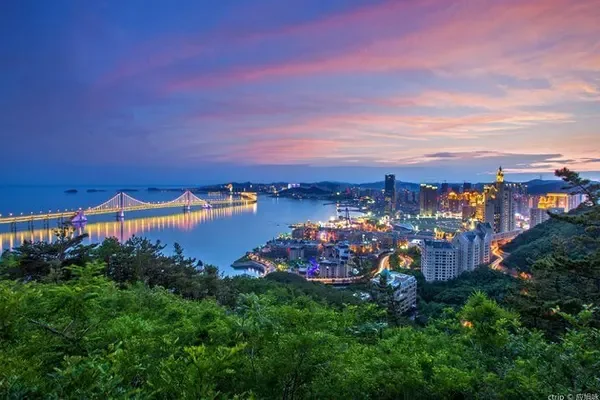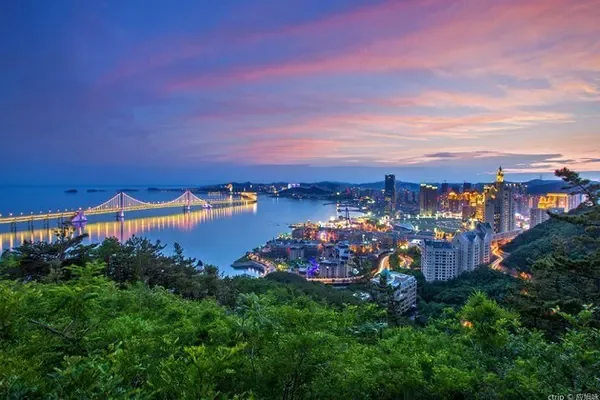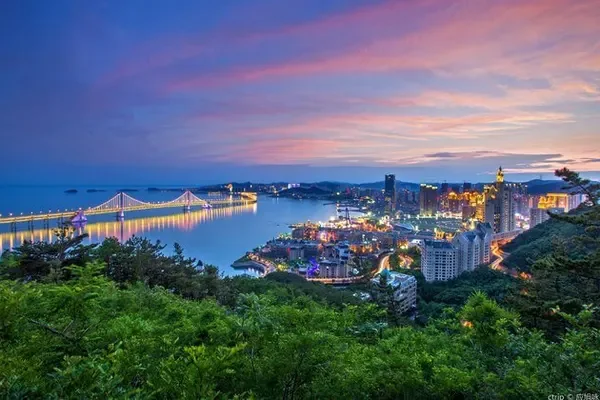Yesterday, following in the footsteps of the Red Army's Long March, I first came to Dawujiang Town, Yuqing County after starting from the ancient city of Jiuzhou.
Back then, the headquarters of the Red Front Army crossing the Wujiang River to the Longchang Ferry was located here.
From October 1934 to January 1936, the Red Army Sixth Army, Red First Red Ninth Army, Red Second Red Sixth Army moved to Yuqing three times, and the Red Army traveled all over the county.
Once the Red Army entered Yuqing: In August 1934, Ren Bishi, Xiao Ke, and Wang Zhen led the Sixth Army Corps of the Red Army as the advance team of the Long March to break out from Jiangxi and march westward to Guizhou, preparing to join the Red Army in the Eastern Guizhou Special Zone. In October of that year On the 3rd, a part of the Sixth Red Army passed through Weng'an Songping and stationed in the Xiaonitian and Gaoling areas of Yuqing. On October 4, the main force of the Sixth Red Army entered Longxi. On November 5, the Sixth Red Army established a Soviet area in Longxi and The provisional government of the Longxi Soviet Area was formed, and a military-civilian meeting of more than a thousand people was held in Longxi. On October 6, the Red Sixth Army entered Shiqian eastward and fought bloody battles with the enemy in Ganxi Town. Jiangxian Muhuang and the Red Army joined forces victoriously.
Yu Qing: In December 1934, according to the decisions of the Liping Conference and the Houchang Conference, the Red Army gave up the strategic goal of joining forces with the Second Red Army and the Sixth Red Army in western Hunan, and planned to create a new Soviet area in northern Guizhou. The three roads of , middle and right forcibly cross the Wujiang River and advance towards Zunyi. On the morning of December 28, the main forces of the First and Ninth Corps of the Red Army of the Right Route Army entered Yuqing. On January 2, 1935, the First Division of the Red Army Corps crossed the Wujiang River at Huilongchang on the Dawujiang River and took the lead in breaking through the enemy's Wujiang defense line. On the 3rd, all the troops crossed the river and marched towards Meitan and Zunyi.
The Red Army entered Yuqing three times: On January 20, 1936, the Second and Sixth Army Corps of the Red Army entered Yuqing via Shiqian. On the 21st, they broke through the enemy's numerous bunkers in Longxi, captured the important passage of Longxi, and sent the The enemy was besieged in an isolated blockhouse. On the 24th, the general headquarters of the Second Red Army and the Sixth Army successfully passed through Longxi, via Weng'an, transferred to Qianxi, Dading, and Bijie, and finally arrived in northern Shaanxi with the Red First and the Fourth Red Army. join forces.
Traveling this route by self-driving, the road is narrow and winding with steep slopes, you need to drive carefully, especially be careful of other cars coming, remember to be courteous and convenient for others, that is, convenient for yourself.
Wandering on this winding path, I deeply realized the twists and turns and hardships of the Red Army's 25,000-mile Long March.



At the end of 1934, the Red Army arrived in Yuqing, ready to go to northern Guizhou to create a new Soviet area. The enemy hurriedly deployed troops on the north bank of the Wujiang River, built fortifications, and confiscated ships on both sides of the river and sank into the river in an attempt to prevent the Red Army from crossing the river.
On January 1, 1935, the First Red Division came to the Dawu River, but failed to find a ferry along the coast. With the support of the masses, they actively planned to tie up bamboo rafts. , to help the Red Army cut down wood and bamboo, and donated door panels, bamboo, baskets, ropes, etc. in the house. More than 30 bamboo rafts were tied up in one night. The first layer of bamboo has horizontal and vertical ones, laying a good foundation for the bridge. The third layer is pricked with several branches, the fourth layer is paved with wooden boards, and the fifth layer is tied with many bamboo poles vertically at both ends, and the two sides are connected with ropes. Standing up, as two insurance walls, the soldiers called this kind of bamboo rafts "five insurance" boats, and each bamboo raft can carry 12 soldiers. The Red Army successfully crossed the river on these bamboo rafts.
This group of sculptures shows the reproduction of the scene of the Red Army tying bamboo rafts with the help of local people.

















Opposite the former site of Huilongchang Headquarters is Hongyi Square, which is still under construction.




There is also a large sculpture of "Ten Sending the Red Army to the Red Army" beside the road.


Then I came to the exhibition hall of the Red Army's forced crossing of the Wujiang River back to the Longchang.
The location of the exhibition hall is more remote, on another country road, fortunately there are signs, so it is easy to find.

The gate of the exhibition hall was open, and it was quiet inside, and no staff were seen, so we went in to visit without inviting ourselves.






Coming out of Dawujiang Town, we came to Houchang Town (now Caotang Town), Weng'an County, Qiannan Prefecture, looking for the venue of the "Houchang Conference". Unfortunately, yesterday happened to be closed on Monday.
The Houchang conference site, first built in 1912, is a courtyard house combining Tibetan style and local style, commonly known as a seal.
From the afternoon of December 31, 1934 to the early morning of January 1, 1935, the Red Army held a meeting here known as "the eve of the great turning point", known as the "monkey field meeting" in history.
The Red Army visited Weng'an four times that year, and the most memorable one was the "Houchang Conference" held by the Red Army when they passed Weng'an Houchang Town.
After the Liping Conference, the Red Army did not solve the fundamental strategic problems. At this time, Li De still stubbornly adhered to the established policy, while Bogu was vacillating. When the avant-garde troops of the Red Army arrived at Houchang on the south bank of the Wujiang River and were about to cross the natural danger of the Wujiang River, Bogu and Li De proposed not to cross the Wujiang River. It is possible to establish a temporary base on the south bank of the Wujiang River, turn back and go eastward, and join the Red Second and Sixth Army Corps. This obviously violates the resolution of the Liping Conference.
Therefore, the Red Army held a meeting in Houchang to refute the claims of Bo Gu and Li De with facts. The meeting reaffirmed the resolution of the Liping Conference and made an important decision: the Red Army immediately forcibly crossed the Wujiang River.
The "Monkey Field Conference" has actually deprived Bogu and Li De of their military command.
After the Houchang meeting, the Red Army forcibly crossed the Wujiang River and marched into Zunyi.



The Houchang Conference Memorial Hall is just next to the Houchang Conference site. Yesterday, because it was Monday, all the museums were closed for rest and the doors were not open, so I couldn't visit it, so I could only take some photos outside.




Fu's ancestral hall, this is the residence of a generation of great men when they participated in the "Monkey Field Meeting".
In the early morning of January 1, 1935, after the Houchang meeting ended, he and his guards returned to his residence: Hu Family Ancestral Hall with excitement, and wrote the well-known poem "Recalling Qin'e" full of pride: West Wind Lie, the wild goose in the sky is called Shuang Chenyue. In the frosty morning moon, the sound of horseshoes breaking, and the sound of horns swallowing. Xiongguan Road is really like iron, and now it is over from the beginning. From the beginning, the Cangshan Mountain is like the sea, and the setting sun is like blood.




Now Houchang Town is also undergoing large-scale construction projects, repairing and restoring some ancient buildings, creating the theme of "a thousand-year-old city, red Weng'an".





The stele of the battle site of the Red Army crossing the Wujiang River Jiehe is on the roadside to the scenic spot of Jiangjiehe National Park. I almost missed it because the monument of the battle site is covered in a weeds and there are no signs.



The Red Army forcibly crossed the Wujiang River Jiehe Ferry, which is also one of the three major crossings for the Red Army to forcibly cross the Wujiang River. I walked for nearly a few kilometers and searched for a large circle, because I didn’t see any signs. In the end, I still couldn’t find the ferry for the Red Army to forcibly cross the Wujiang River Where.




So I took some pictures of the Wujiang River on the Jiangjie River Bridge. The Red Army should have crossed the Wujiang River somewhere here.

From the cliffs on both sides of the Wujiang River today, one can imagine the danger of crossing the Wujiang River during the Red Army's Long March.





Today's Weng'an County is creating a culture of "Wengshui Changge".


Yesterday, I originally planned to follow the footsteps of the Red Army and go to one of the three ferry crossings that the Red Army rushed to cross the Wujiang River: Chashanguan Ferry at the junction of Zunyi County and Kaiyang County. When I arrived there, it was already 7 in the evening. It was too late, and the sky was getting darker. I searched around without a reference sign, but I couldn't find it, so I had to give up.
Taking advantage of the darkness, I rushed to Zunyi city overnight last night.
This morning, I first came to the addresses of Zhang Wentian, Wang Jiaxiang and others during the Zunyi meeting.


This scenic spot was temporarily closed due to internal renovation, so I stood on the flyover not far away and took a few photos.




Then, I walked to the site of the Zunyi Conference. The distance between the two scenic spots is only one kilometer. Because I brought the head of the delegation, I couldn't visit inside.
However, the Zunyi Conference was a great turning point in the fate of the Red Army, so I must introduce it solemnly:
On January 4, 1935, the First Red Army Corps and the Ninth Red Army Corps returned to the new and old ferry crossings in Longchang to cross the river respectively, opening the way to occupy Zunyi.
On January 5, the First Red Army, the Third Red Army, and the Ninth Red Army entered and occupied Zunyi from various roads.
On January 6, the First Red Army and the Sixth Red Army captured Zunyi City. On the same day, all the Red Army crossed the Wujiang River.
On January 8, the Red Army General Headquarters entered Zunyi. On January 9, the Red Army column entered Zunyi.
Beginning on January 14, the Red Army prepared to hold the Zunyi Conference.
From January 15th to 17th, the Zunyi Conference was officially held.
The Zunyi Conference was held at an extremely critical historical juncture, when contact with the international community was cut off. The Zunyi Conference independently corrected the wrong leadership, established the correct leadership, saved the Red Army, and saved the Chinese revolution. A life-and-death turning point marked the maturity of the Red Army.






The Zunyi Conference Memorial Hall is adjacent to the Zunyi Conference site.


The former site of the Local Work Department of the General Political Department of the Red Army.



Former site of the General Political Department of the Red Army.


Addresses of participants during the Zunyi meeting.



Red Army Street.



Walking street.



Zunyi Memorial Park.






church.


The new look of downtown Zunyi today.





I saw the very human side of Zunyi: you can take the elevator up to the pedestrian bridge.

Today’s travelogue has a lot of content, I have worked very hard to sort it out, if you don’t find it hard, just read it slowly, you are the best if you can persist in reading the last paragraph, thank you for your support.
See you tomorrow!


